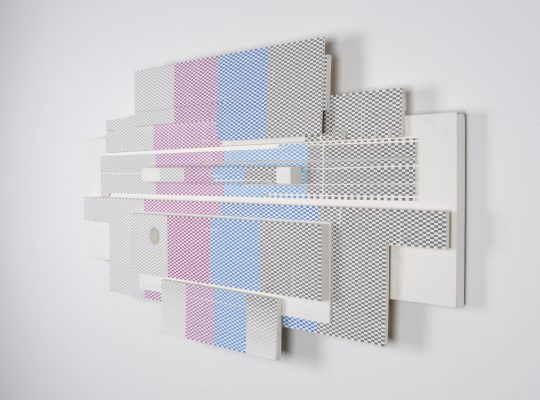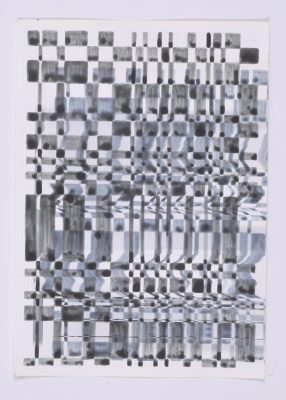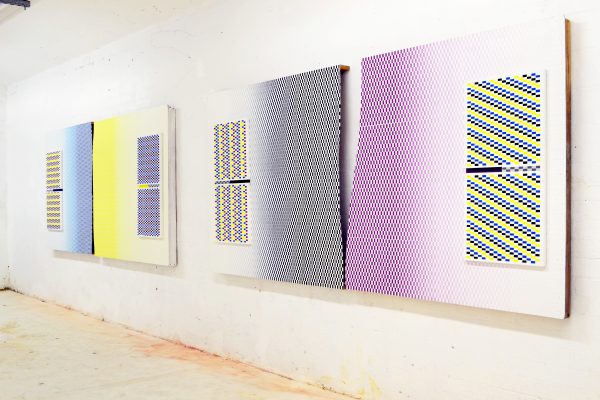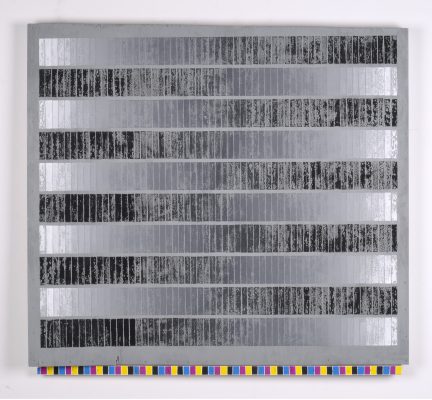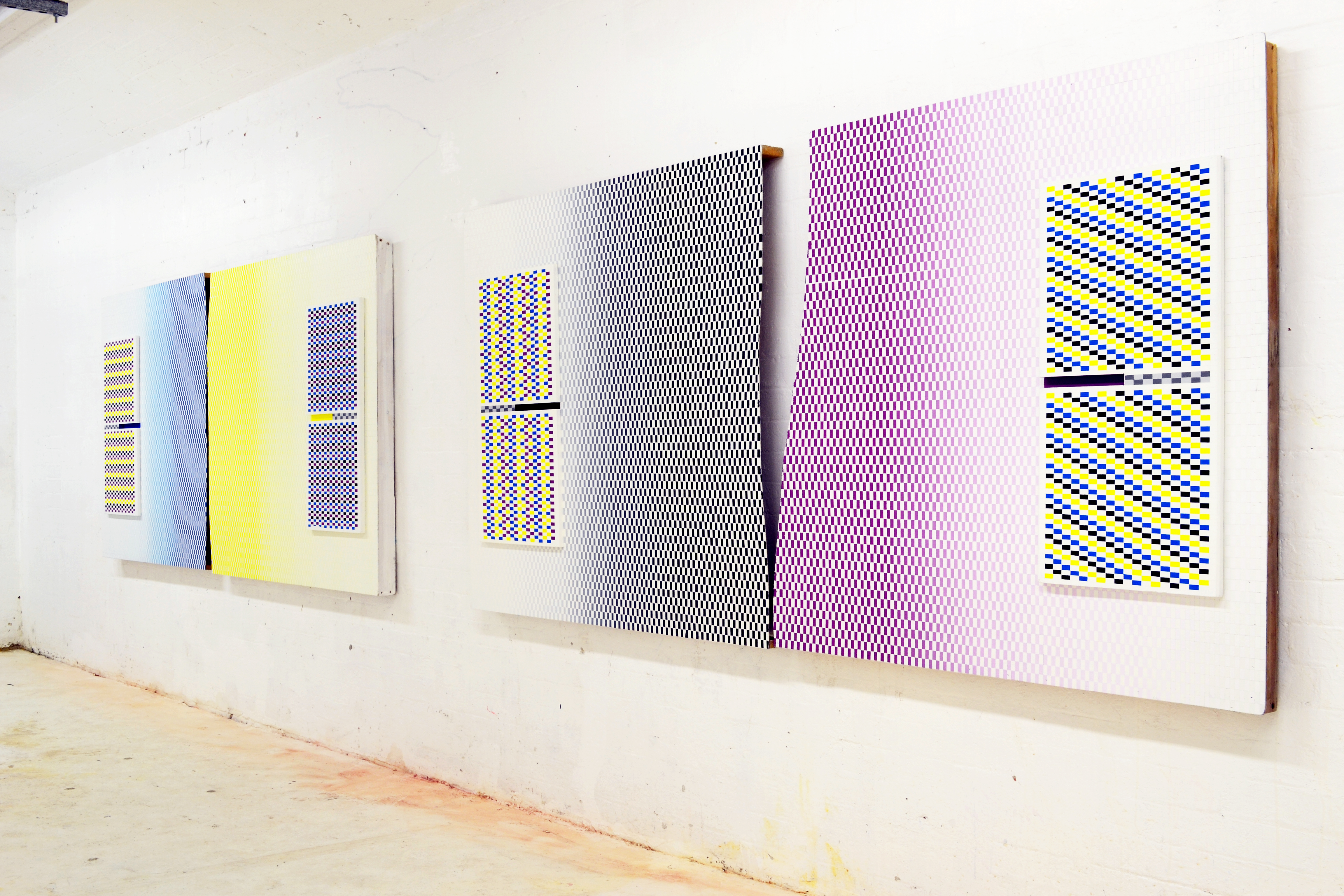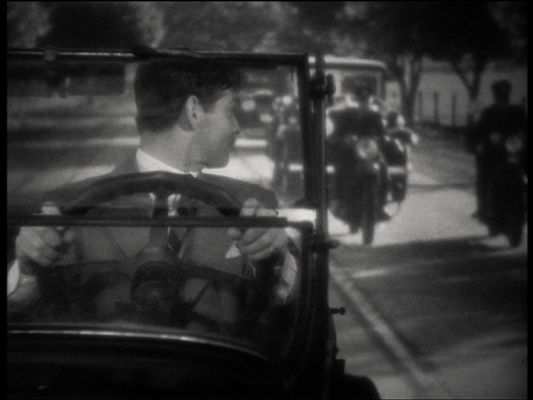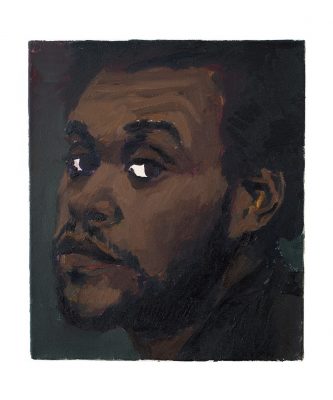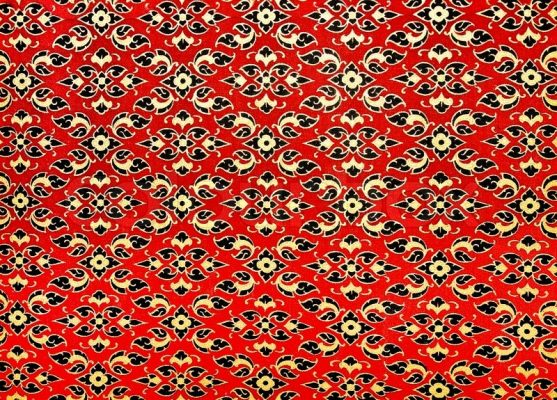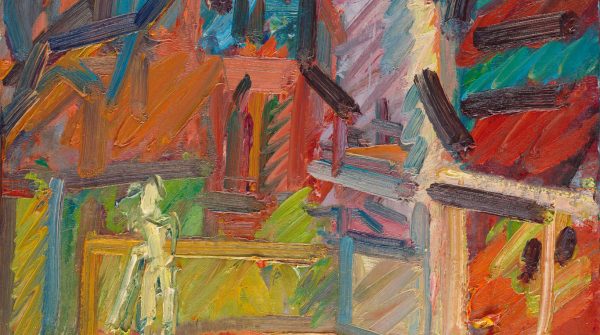What follows could have been an essay or an interview. In the event, it resembles the one as little as it resembles the other. The images are nearly all by Vanessa Hodgkinson. David Trotter supplied most of the words.
This is the story of a critic’s encounter with work by an artist who had encountered some of his ideas. Although the artist the story describes is an artist and the critic a critic, it’s not always easy to tell exactly where in the art the artist ends and the critic begins, and exactly where in the criticism the critic ends and the artist begins. What follows is the log of a conversation which has been going on in various ways for about six months, and will be continued. It is the record of images that would not have been made and thoughts that would not have been thought had two individuals not chanced to become conversant.
Techno-primitivism made its first public appearance in an essay I published in the London Review of Books in August 2012 on D.H. Lawrence’s Lady Chatterley’s Lover. Lady Chatterley’s Lover is full-on primitivist. During the First World War, Lawrence finally became convinced that Europe was in the process of destroying itself, and that renewal – if renewal were still possible – could only come from sources in a mentality at once beyond and before the civilisation it had brought about. In works like Fantasia of the Unconscious, St Mawr, The Plumed Serpent, and Mornings in Mexico, he drew a stark contrast between a white European and North American civilisation rendered lethally sterile by its commitment to Christian-Platonic idealism and doctrines of scientific-industrial ‘progress’, and that of aboriginal peoples whose custodianship of ancient intuitive and animist modes of consciousness had encouraged momentous if ultimately futile resistance to colonial expansion. After the war, he travelled to Italy, Ceylon, Australia, and New Mexico in search of the few remaining custodians. His letters of this period express both contempt for Western attitudes and ways of life in toxic decline, and uncertainty about what the available alternatives might add up to. So it’s not surprising that the novel he wrote when he decided once again to write about England, Lady Chatterley’s Lover, a novel instinct with the melancholy of his final return to his ‘native Midlands’ in September 1926, should lapse into polemic.
Primitivism of a conventional kind has been inscribed in the topography of Lady Chatterley’s Lover. The woodland hut and cottage in which elegant, free-thinking, modish Lady Chatterley learns how to renew the life of the body at the hands (so to speak) of Mellors, ex-blacksmith and horse whisperer turned game warden, constitute a liminal space deep in the heart of old England: an ancient sacred realm distinct from the equal and opposite modern profanities of decaying manor and brash suburban development. Like many of his contemporaries, Lawrence thought of the primitive as a source of renewable, renewing energy.
I’ve always been fascinated by the things Connie Chatterley takes with her when she leaves all-mod-cons Wragby Hall to spend the night for the first time in Mellors’s humble woodland cottage: a pair of rubber-soled tennis shoes, a lightweight mackintosh, perfume by Coty. There is of course a narrative reason for her to avail herself at such a time of these particular accessories: truants need shoes that do not squeak, an overcoat keeps off the chill night air, perfume can mask as well as entice. But the accessories acquire a further salience in the novel because the journeys undertaken with their aid involve a complex negotiation, on her part, between the self-consciously contemporary and the self-consciously archaic.
Those rubber-soled tennis shoes, for example, are themselves at once contemporary and archaic, the product as much of the laboratory as of the plantation. Rubber began as a natural plastic milked from the Hevea brasiliensis tree, but proved of little general use until, in the late 1830s, someone worked out how to combine it with sulphur at high temperatures, a process known as vulcanisation. Thereafter, it gradually became ubiquitous. Electrification and the motorcar, the two most spectacular consequences of the late-nineteenth century techno-scientific revolution, and between them the stimulus to momentous social and cultural change, both ran on rubber. And yet this artificial substance which coated, supported, and interlined the miracles of modern engineering was itself, or had once been, palpably a product of nature. Chemistry transformed it, endowing it with suppleness and strength, but not out of recognition. The imaginative opportunity rubber’s hybridity represented, of exposing the archaic in the contemporary, the raw in the cooked, was not one a literary culture high on primitivism was likely to pass up. During the 1920s, the crepe rubber used to manufacture the soles of sports shoes was extensively marketed as a natural substance, because, unlike other kinds of rubber, it did not require vulcanisation. The industry sold reinvigoration to the (literally) well-heeled metropolitan middle and upper classes: a bit of ancient wildness on suburban tennis court and golf course. Connie’s awareness of the function, texture, and meaning of the gadgets she has brought with her into the forest immunises her at once against the modern metropolitan gentility she has left behind and the bullying primitive force which will soon rear up to greet her; against too much civilisation, and too little.
The rubber-soled tennis shoes, like the lightweight mackintosh and the perfume by Coty, remind us that Connie is not just after a source of renewable, renewing energy. Hers is a techno-primitivism: one which operates throughout within and upon technologically mediated experience by means of a strong awareness of substances which, deriving at once from the laboratory and from the plantation, continually re-open the constitutive, inexhaustible difference between nature and culture.
The essay provoked a good deal of comment, including wry, rueful, and fond reflections on the physical properties of rubber. It was summer, and there were crepe soles everywhere. To me, the most interesting response came from someone I’d never met before, who wrote by email, and mercifully as a painter rather than a fetishist. She thought there was a parallel to be drawn between the claims I’d made for techno-primitivism and the new media art she’d started to make using the deliberately archaic technique of egg tempera on gesso panels. Could I say a bit more? The bit more turned out to be quite a challenge. It meant testing an idea put forward to explain what was going on in a novel first published in 1928 against work done yesterday in a different medium altogether.
The first major difference became apparent immediately. Lawrence may have admired the ancient Etruscans tremendously for their joie de vivre, but he didn’t expect them to have written books in a style he could emulate (though he did require Old Testament cadences to explain exactly what it is that Mellors is doing to Connie in the cottage in the woods). For Vanessa, by contrast, as for the painters of Lawrence’s time, the ‘primitive’ was a matter of technique.
For such a modest concoction, egg tempera has had an important part to play in modern (and especially Modernist) understandings of the ‘primitive’ in art. A combination of egg yolk with finely-ground pigment, it became the basic medium of medieval panel painting. The thin, tough coat it made was perfect for the production of high-keyed, flat colour surfaces. According to Robert Motherwell, Mark Rothko, visiting Florence in 1950, fell in love with the sourceless, evenly-spread glow of the ‘bright tempera’ frescoes Fra Angelico had created for the cells in the convent of San Marco. What bright tempera could not handle, however, was the continuous progression of values necessary for convincing three-dimensional effects. Hence, as the histories relate, the triumph of oil as a medium and of representation as a method. Hence, too, the desire periodically felt by those with a grudge against representation to renew acquaintance with a medium and method before painting in oil. We tend to think of Modernism in art as a turn towards Africa or Asia. But Roger Fry, sponsor of the ground-breaking Manet and the Post-Impressionists exhibition at the Grafton Gallery in London in 1910, saw the work of Manet, Matisse, Picasso and the rest as an attempt to ‘go behind the too elaborate pictorial apparatus which the Renaissance established in painting.’ This was not a ‘conscious archaism’ of the sort cultivated by the Pre-Raphaelites, Fry maintained. The Grafton painters had instead ‘stumbled upon the principles of primitive design out of a perception of the sheer necessities of the actual situation.’ They knew that only by going ‘behind’ the pictorial apparatus perfected by Raphael would art throw off its own ‘accumulations of science’ and ‘regain’ the ‘power to express emotional ideas’. For Fry, ‘primitive design’ re-energises by failing to represent scientifically. This was not yet a techno-primitivism. So what might egg tempera do, a hundred years on, for an art which, while still militantly non-representational, has none the less learned to enjoy the accumulations of science?
I first viewed ‘Hand of a Thief’ (2012) as a series of images on a screen in a state not all that far from motion-sickness. It would not stop shimmering (to shimmer is to glisten tremulously, but also to glide or drift).
Try to focus on the blue checkerboard which occupies the centre of one of the foremost panels, and the diagonals start to bounce about all over the place. Turn your eyes to left or right, and the mirage will stabilize for a moment as the panel-edge brings into view the four-square solidity tucked away behind it, before that, too, starts to squirm. I thought of the Vorticist Edward Wadsworth dazzle-camouflaging merchant-ships against submarine attack during the final years of the First World War. Rather than hiding a ship away, dazzle-camouflage made it stand so far out from its environment that the attacker could not tell where it was. Concealment arose out of an excess of information rather than a lack. Vorticism’s jagged patterns created a kind of adverse contour. Dazzle-camouflage returned the compliment. In Wadsworth’s wonderful ‘Dazzle-Ships in Drydock at Liverpool‘ (1919), and even more so in the series of eight woodcuts which preceded it, dynamic abstract pattern dissolves figure into ground.
There is nothing in the image to take aim at.
But there are edges to ‘Hand of a Thief’, and they do matter. Or, they are matter. They are where matter (re-)appears. They declare that the material on which these dazzling checkerboard designs have been emblazoned is found material, lumber. ‘Lumber’ shares an etymology with ‘lame’, and each of the sawn-off, pocked pieces of board does seem to have required the assistance of stretcher-bearers to reach its place in the stack of casualties awaiting triage. I’ve been led (astray) by the title, which invokes the childhood memory of an image of an amputated hand reproduced from Iraqi television in a British newspaper in the early 1990s. The hand is the primary means by which we reach out into the world in a perpetual act of readjustment. Amputation creates an edge where there was once continuity, an end-stop, an abrupt, revealing cross-section of flesh and bone. ‘Hand of a Thief’’s amputated edges arise out of and confirm memory’s arrest of the flow of data, the media-mirage. At first, gazing at the image on the screen, I mistook the circular hole in one of the panels for a globe floating in front of the picture-plane. The dazzle-camouflage had worked! Looking again, though, I see that the edge of this work (its carefully engineered lameness) runs through its middle. The edge is in, or around, that circular hole. It’s in the random slashes and gouges.
The painting doesn’t mean to dazzle, ultimately. If it were a merchant-ship, it would have got itself torpedoed by now. The edge leads us back not to a centre (there isn’t one), but to the array of surfaces, which is where the body has made itself felt, in this image: the myriad of squares, each one hand-painted by a person who has had laboriously to stoop or crouch for hours on end to get it right. These checkerboard designs have an emphatic size or scale to them (in the Ordnance Survey national grid system, the term ‘myriad’ refers to an area 100km x 100km). But the squares which compose them, gouache balanced on layers of egg-tempera, don’t disguise either their miniature status, or the patience miniaturization demands. Their facture embodies time as well as space. The trouble with egg tempera, Vanessa told me when I visited her studio, is that it stinks to high heaven while it’s drying. The pong’s gradual evaporation measures the time it has taken to create the work of art through a principled slow going. The ‘primitive’, once considered a quick energy fix, now burns at the speed of rottenness. It’s no surprise to learn that Vanessa had been reading the ‘Post-Hastism’ manifesto co-authored by Shumon Basar, Hans Ulrich Obrist, and Joseph Grima, which calls for the eradication of high-speed banality.
I like to think of the painter filming the egg tempera with gouache, covering tempera’s primitive slightly slippery moistness with a membrane or lamina as dry as technology itself. There are films in nature, like the one beneath the shell of an egg. But when we speak of film, even in these post-celluloid days, we more often have in mind a specific representational apparatus which coats the world in fresh visibility. Although it may often appear seamless, that coat has of course been cut, again and again. Cinema is a creature of cuts. So the painter might be thought to ‘film’ in another sense. She edits egg tempera with gouache. She has already begun to act technologically, even as she manoeuvres with her brush a paste concocted of honey-like gum Arabic (gouache is also known as body colour). She has already decided: etymologically, to decide is to cut off. Working in egg tempera, the painter’s hand has in Fry’s sense gone back behind the accumulations of science – albeit to steep itself in decay, rather than, as he would have demanded, to suck up energy. But its decisive editing of tempera by means of gouache is complicit with the cuts to come, cuts which will convert decay into dazzle-camouflage.
Montage proceeds by dissolve, wipe, fade-in and fade-out, as well as by jump cut. Similarly, gouache in ‘Hand of a Thief’ isn’t all Jean-Luc Godard. Something else of interest happens, for example, as it were below the radar, in its lowermost panel, where the two outer checkerboards fade very slowly out into (or towards) white. The much gentler edit in progress here remembers the gradual evaporation of tempera’s stench. It resumes, as a kind of counter-dazzle, in the utterly gorgeous ‘You’re Just a Headline to Me (C,M,Y,K)’ (2012).
This is an altogether less edgy work, predicated not on the cut, but on the fade-in or fade-out (it depends how you look at it). The mirage is now a flag unfurled, a magnificent banner drained of colour by exposure to the elements, it might be, fraying slightly at the edges. For the misshapenness of the panels only becomes apparent when they are set side by side as a reckoning with the persistence of decay.
There is another informing principle at work, here, that of subtraction. In each panel, one of the four colours (cyan, magenta, yellow, and key, or black) used to test the ink in a printer-cartridge has been subtracted from the complete set, and left to its own devices. The depleted colour-chart sits in state – pure ceremony, it tests nothing – above the real action, which takes place beneath it, the shuttling to and fro of its own supplement. In one direction, the subtracted colour fades evenly out; in the other, it halts at the uneven edge of found material (an effect reinforced when the panels are set side by side). A colour-chart is for information only. Once it has told us that our printer works, we chuck it in the bin and forget about it. The painting takes nothing away from this piece of technological lumber by subtracting from it its capacity to inform. Instead, the patient, passionate slow going to which the drawn-down element has been subjected makes us wonder whether any product of the accumulations of science could ever be merely informative.
Vanessa and I had been talking about what can be achieved by going slowly, and I said she would enjoy Frank Capra’s great screwball comedy, It Happened One Night (1934), in which the protagonists, down-on-his-luck journalist Peter Warne (Clark Gable) and spoilt heiress Ellen Andrews (Claudette Colbert), make their way by bus and stolen jalopy from Miami to New York City. From the outset, transport is to be understood as a communications medium. Boarding the bus in Miami, Warne finds his seat occupied by a mound of newspapers, which he summarily dispatches through a window. Thereafter, messages continually arrive in the shape of newspaper headlines, some of them planted by Ellen’s wealthy father (Walter Connolly), who intends to track her down with the help of her fortune-seeking husband, ‘King’ Westley (Jameson Thomas), and then to annul the marriage. Warne in turn sends various messages to his editor concerning Ellen and her whereabouts. ‘You’re just a headline to me,’ he tells her, though he doesn’t really mean it. Andrews twice overtakes them, by means of a private airplane that doubles as communications hub, and a motorcade with full police escort.
In both scenes, Andrews continually urges greater speed. Peter and Ellen, on the contrary, must slow down enough to fall in love. They must while away time. They must erect obstacles to their own desires, most notably the ‘wall’ made of a blanket that divides their shared bedroom. The talk is rapid-fire, in screwball comedies, but its function is to retard and impede, to stop the protagonists throwing themselves away on someone else. Warne’s mulishness is in fact a declaration of sorts. It indicates that he will slow down enough, as Andrews speeds by, to fall in love: that is, to stop Ellen becoming no more than a message transmitted from wealthy father to wealthy husband (and then back again, if the money’s right); no more than a headline.
And yet ‘You’re Just a Headline to Me’, which owes its title to the chat Vanessa and I had about going slowly, can’t be said to share Capra’s desire to get off the information superhighway altogether (his renegades are never happier than when marooned in pastoral). The title itself is a couple of clicks away. These are paintings which know that they will be Googled as well as seen. It’s not at all hard to imagine someone stood in front of another C-M-Y-K painting, ‘Give You My Lovin’’ (2012), smartphone in hand, listening to the song the title refers to.
Information ‘sees’, too. It always has, of course. What’s new is the capacity of an artefact such as a painting to stir up an instant data-storm on the spot.
Techno-primitivism draws back from the technological only in order to get a better grasp upon it. Its tempera habit should not be confused with that of Edward Wadsworth, for example, who put dazzle-camouflage behind him as soon as he decently could; or that of Giorgio de Chirico, a major influence on the marine still-lives Wadsworth began to paint in the late-1920s. By the time a second world war arrived, and with it further dangers to shipping, Wadsworth had become altogether too temperate. ‘Bronze Ballet’ (1940) even manages to anthropomorphize the most highly engineered of all a ship’s mechanical parts, the propeller. Techno-primitivism seeks out not only the primitive in technology, but the technological in the primitive.
Let’s return to Fry’s understanding of the primitive as exemplified by the tempera habit of pre-Raphaelite painters such as Fra Angelico. ‘Christ Glorified in the Court of Heaven‘, the central panel of the predella for the high altarpiece in San Domenico, in Fiesole, now in the National Gallery in London, was painted entirely in egg tempera, according to traditional Florentine practice.
But its effect depends entirely on the contrast between strongly-coloured pigment and a background of gold leaf: or, to shift the emphasis slightly, between effects produced by the human hand moving freely and patiently across a surface and effects produced by a metal instrument driven down into it at regular intervals in accordance with a pre-determineded design. The haloes which adorn the heads of Christ’s followers were created by the mechanical tooling of gold leaf, as Daniel Thompson explains in The Materials of Medieval Painting, an indefatigable survey of lampblack, cochineal, turnsole violet, grain lakes, burnished water mordant gilding, and much else besides which first appeared in 1936, at the height of Modernist abstraction. ‘Gilded gesso is fairly elastic,’ Thompson noted, ‘and any pressure of a point upon it will make a mark. The larger the point the heavier the pressure required.’ The haloes were ‘swung with compasses, which pressed the circular lines firmly and smoothly into the gold.’ Once ‘swung’ (the term robustly captures the action of a machine), each halo was further tooled by the application of various patterns – dots, rings, stars, leaves, flowers – using steel or bronze punches. The purpose of the tooling, Thompson adds, was ‘to break the uniform reflection of the metal surface, to change the glow of the unbroken gold into a sparkle in the areas of stamping.’ So there was dazzle-camouflage of a kind undertaken in the depths of the medieval church, too, an excess of information which makes it hard to fix the image. ‘This stamping introduced a play of light, a glitter, a shimmering quality, which has faded with the brightness of the gold.’ Anything to unsettle too steady an aim, in worship as in target-practice. The panel scintillates (a scintilla is a spark, or minute particle); but not to the point of obscuring its patient, passionate tempera film.
The tooling of the gold leaf is often spoke of as a kind of mechanical inscription which we might want to oppose to the hand’s filming of a surface. Technologies are inscriptive, as Kafka understood when he imagined his punishment-machine as a harrow which writes the criminal’s sentence deeper and deeper into his body. We prod away on keyboards, or dab and flick at screens. The cursor may hover, or glide. But a decision has continually to be made, by means of the sharp downward pressure which sorts information, separating the useful from the useless once and for all. Information technology tends inexorably towards the expedited 1-click shop. Human beings, by contrast, are often thought to be at their most human when they address or tend or film surfaces, notably their own and each other’s skin, with appropriate indecisiveness. This opposition, however, is no more stable than most.
Not surprisingly, given its complexity, there was extensive preliminary use of incised lines in ‘Christ Glorified in the Court of Heaven’, in order to fix the main elements of the composition, and the relationships between them. The detail also required a good deal of underdrawing, some of it in iron gall ink. Traditional inks were made by combining gall – the substance of outgrowths on the surface of plants and trees which heal the incursions made by parasites such as insects, fungi, and bacteria – with ferrous salts. Unlike most modern inks which sit on the surface of the support, iron gall inks bite acidly into the paper or vellum to create a permanent mark. They acquire a durable dark velvety colour, eventually browning as the iron content turns into rust. By the same token, poor preparation often meant that the ink corroded its support away altogether. Clearly, there is a good deal for the techno-primitivist to ponder in this technology produced by chemical reaction between organic suture and metal trace, which films by inscribing, which fixes in and through decay.
Vanessa’s drawings in oak gall ink, prompted by our discovery of a text about the conservation of the National Gallery predella, contain several layers of information. The paper has been chosen because it already incorporates a faint grid which orientates the oak gall drawings of checkerboards on different scales, each quickly worked with the ink still fresh. Once the original drawing is dry, it’s placed on a flat-bed scanner, which imports the image into a computer. The virtual image is then printed over the original. In some cases, the drawing has been moved slightly while it’s in the scanner, so that original and copy never quite match up and the difference, as she says, sits between them, playfully.
Drilled into the paper by the hand’s downward pressure, the oak gall ink inscribes. Then the machines, unlike Kafka’s torture-harrow, hover and glide, coating with light. The opposition between surface and edge, between the primitive and the technological, has been reversed. It’s that reversal which allows ‘Oak Gall and Printer IV’ to sit between film and inscription, body and machine, beholden to neither, opening up for inspection and enjoyment that constitutive, inexhaustible difference.
Semi-transparent oak gall blocks gather darkness where they rest on the blue-grey flows beneath, which cascade down the grid drawn or printed on paper. Here and there, pure, rich velvet obtrudes, turning block into blot. This is a tattoo which wriggles. The pattern has been sternly inscribed; and yet a delirious lateral undertow of blue-grey swirl pulls the blocks and blots hither and thither, so that vectors of action ripple oddly up the grid in places, against the cascade. Does the movement amount to slow going, or fast? Is it the product of a hand’s mechanical drilling down, or a machine’s tender glide?
Encountering Vanessa’s work has encouraged me to wonder what techno-primitivism might mean for painting now, rather than literature then. But neither she nor it remain tied down to a particular medium. There can still be (let’s hope) techno-primitivism in literature, in cinema, in who knows what. The point of it all is to ask of technology the sorts of question that only works of art can ask of it.
We might think of the techno-primitivist work of art as a kind of anti-skeuomorph. A skeuomorph is that memory of the ancient built into the design of the modern for the sole purpose of making the modern seem less modern than it actually is. An element of structure reappears as decoration. Skeuomorphism thus understood rules the computer interface. Audio processing software packages, for example, reproduce the input functions (knobs, switches, sliders) of the original hardware they have been designed to replace. Note-taking applications imitate the features of a physical binder, right down to the ‘leather’ spine and torn-off ‘page edge’. Or there’s that functionless click your digital camera emits to encourage you to believe that you have indeed taken a ‘photograph’, rather than pressed thin air while making like David Bailey. Given the pace of technological change, it wouldn’t stretch the point too far to consider such decorativeness as an invocation of the ‘primitive’ for the purpose of reassurance. Techno-primitivism is against all that. It wants rather to exploit any available slack in the system which has long bound the technological to the primitive: machine to body, surface to edge, film to inscription, fast going to slow, dazzle-camouflage to the stench of decay. Techno-primitivism likes nothing better than to get a good look at such distinctions by turning them upside down: an aim as old as it’s new, as new as it’s old.
